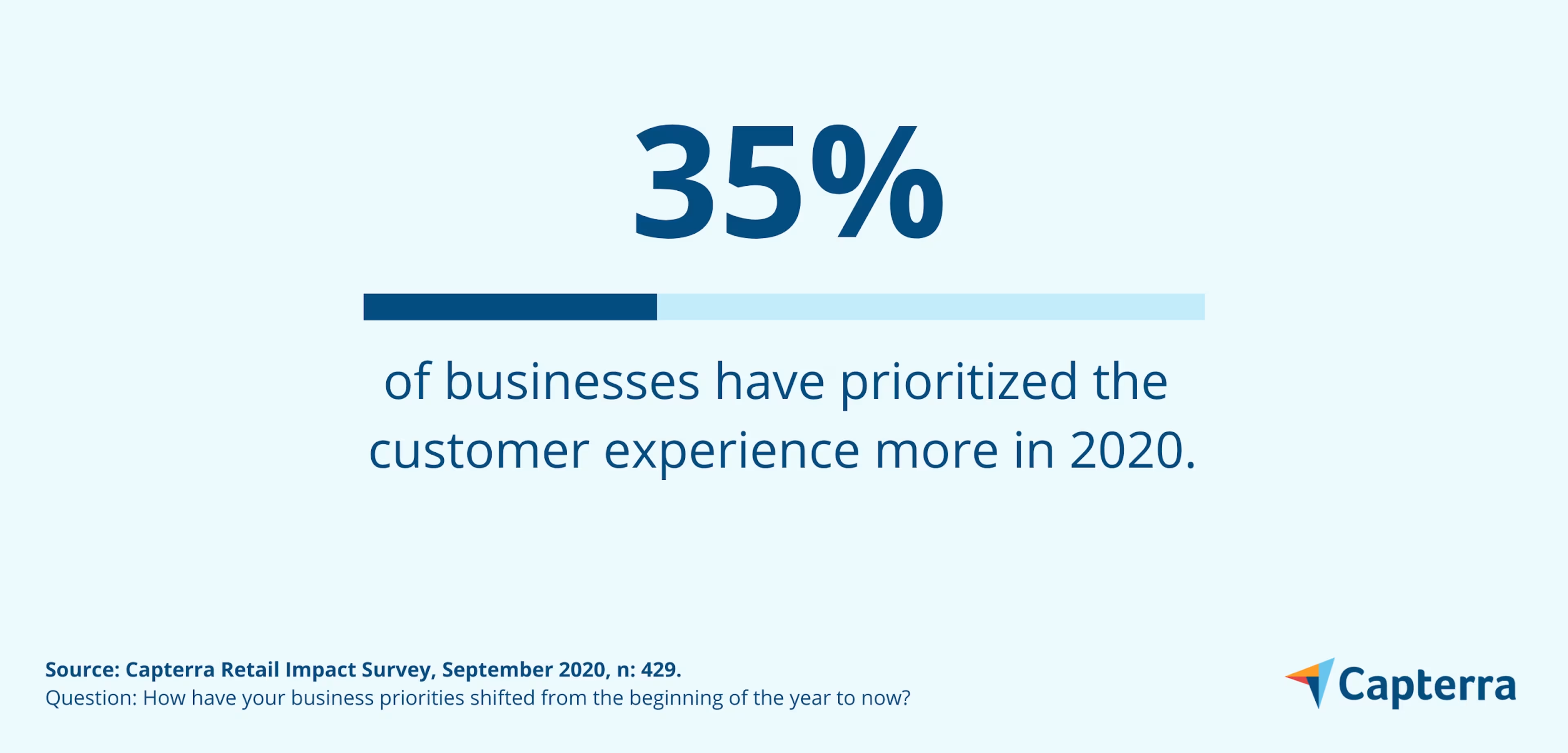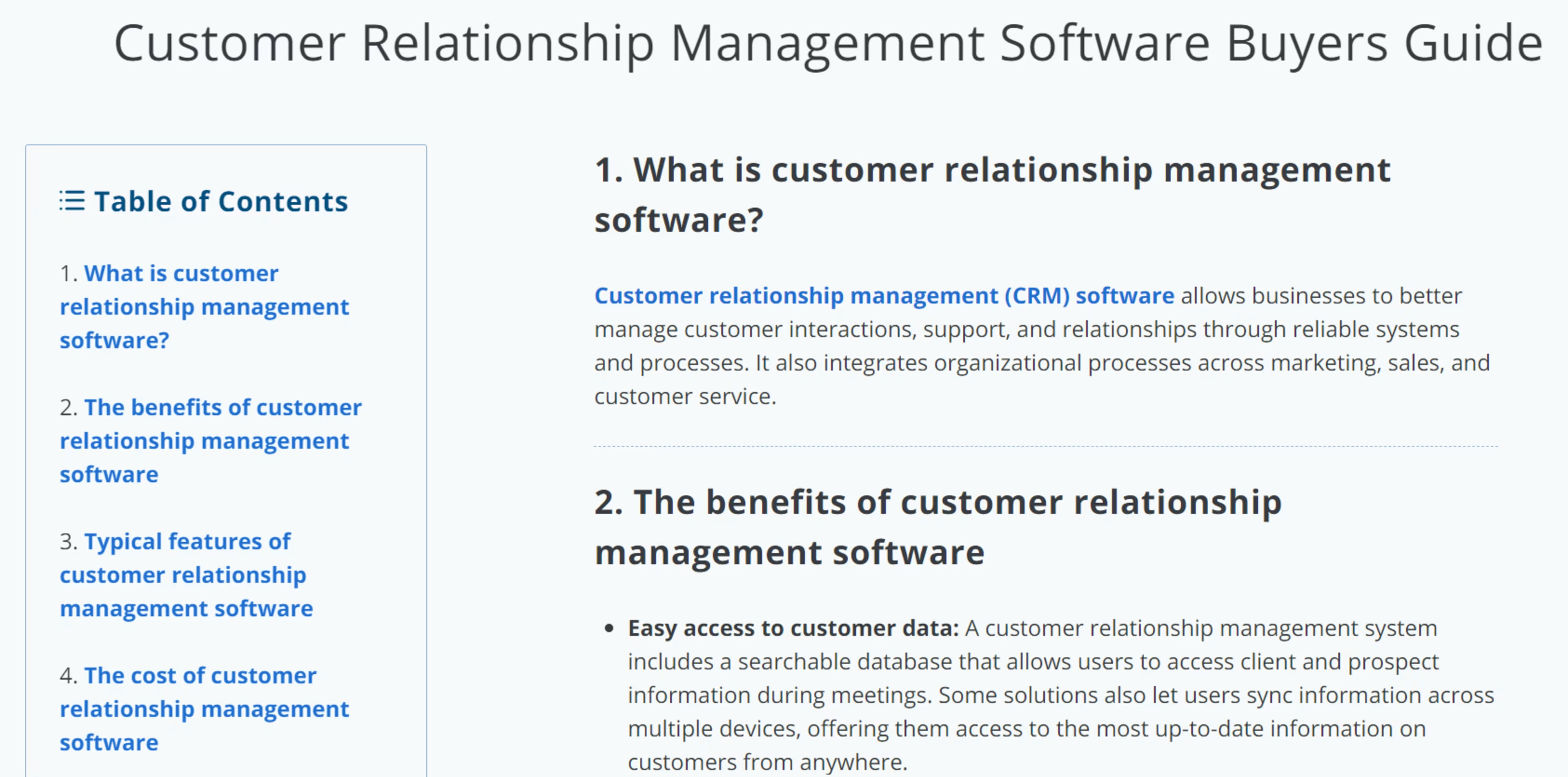How do you develop organizational excellence in customer service? By developing employees who are excellent at customer service.

You never know when you’re about to have an opportunity to make or break a customer service experience, and by the time you realize you’re having a meaningful customer interaction, a lasting impression may already have been made (good or bad).
In 2020, businesses are striving to deliver an excellent customer experience more than ever before.
In fact, a recent Capterra survey of more than 400 retail leaders shows that more than a third of businesses are ramping up their customer experience efforts this year (methodology below).

Your business can be a part of this growing wave of customer service excellence--boosting customer loyalty and repeat sales in the process--by taking steps now to develop organizational customer service competencies.
Why should this be a priority right now?
This summer, we also surveyed more than 500 small business leaders to gauge the financial impact of COVID-19 on their business. That survey found that 43% of businesses said that retaining customers was their highest short term priority for surviving COVID-19, more than any other priority.
No formal customer service team? No problem!
One effective way to improve your organization’s customer service capabilities and retain more customers is to mobilize all of your associates to become effective customer support ambassadors. This doesn’t mean that you need to ask your sales team to perform double duty as customer service reps—just empower them to provide good customer service when the opportunity presents itself during their normal duties.
For example, imagine if a member of your sales team is on a sales call trying to upgrade a client when that client becomes irate about a recent experience with your company. If that agent has the right customer service competencies, they might be able to satisfy the client and retain them as a customer rather than losing them altogether.
In this article, we’ll look at three critical customer service competencies that you can incorporate into your employee training program to develop a culture of excellent customer service.
What are customer service competencies?
Customer service competencies are essential abilities that every employee should develop to help serve customers.
While there are many useful qualities for customer service representatives, they can be grouped under three main categories, according to Gartner’s “In-Demand Rep Skills for a Digital-First Customer Service Organization” (full report available to clients). Those categories are autonomous problem solving, customer relationship ownership, and technical ability, and they are made up of derivative skills.
Let’s take a closer look at each, and how you can enable your team to possess these competencies.

1. Autonomous problem solving
Related skills include:
Creative problem solving
Judgment
Decision making
Adaptability
Every employee needs to know when to escalate an issue to a manager, but being able to resolve or address issues before they need to be escalated is a highly valuable customer service skill.
It certainly isn’t easy to teach someone good judgment or on-the-spot decision making. That’s why hiring good candidates in the first place is so important. Then, arming your team with this competency is just a matter of empowering them with the independence to make decisions on their own.
For example, you can let your team know ahead of time what kind of actions they are preapproved to take during a customer service interaction before escalation. This might include offering a free month of service or recording a formal complaint. This can empower any employee to potentially resolve a customer service issue before it needs to be escalated.
If an employee does overstep their boundaries during a customer service interaction while acting in good faith, praise their effort while helping them calibrate their judgment for future interactions.
How to develop this competency: Have processes in place for customer service interactions, but encourage all employees to find ways to adapt and improve those processes when it makes sense. Here are a few examples to help you get started:
Create an internal knowledge base of solutions to common or previously resolved issues and make it accessible to your staff (Knowledge base is a common feature in customer service software).
Create a shared decision tree, based on the input of management and your most experienced customer service representatives, to help less experienced staff know when to escalate an issue.
Schedule periodic team meetings to discuss recent teachable customer interactions, including those with both good and not so good outcomes, so that everyone can learn from them.
Fostering this type of mindset not only encourages your employees to be problem solvers, but can also improve your organizational processes.
2. Customer relationship ownership
Related skills include:
Relationship building
Altruism
Customer advocacy
Initiative
Any time a customer reaches out to your business—whether it’s for technical support, to file a complaint, or to upgrade their service—it’s an opportunity to strengthen your relationship with them. Of course, depending on how it’s handled, it can also become an opportunity to weaken or even terminate your relationship with them.
If all of your employees possess emotional intelligence and are skilled in building customer relationships by taking the initiative to help them in an altruistic manner, your organization can earn a reputation for helping customers in the long term and not just prioritizing short term gains.
For example, if a sales rep is dealing with a customer who wants to upgrade before they actually need to upgrade, that sales rep can earn a big customer service win by advising that customer to hold off on upgrading until the upgrade is warranted. While they might be passing up an upgrade commission in the short term, they could be winning a long-term customer who will make many repeat sales rather than just scoring a short-sighted bonus.
How to develop this competency: Set realistic sales goals for commission-based representatives, and look at the big picture when determining merit-based rewards. Encourage and reward employees who build customer loyalty by providing great customer service rather than focusing on racking up lots of small-ticket sales.
Gartner suggests the following strategies for sales calls to develop this type of mindset:
Look beyond individual interactions to identify overarching customer goals and construct a pathway to long term customer success.
Offer unprompted advice and recommendations for products or services when they are relevant to those long term customer goals.
Be proactive and thorough in assessing whether customer needs have been met.
3. Technical ability
Related skills include:
Data literacy
Live chat communication skills
CRM knowledge
Customer service software skills
In the year 2020 and beyond, there are very few abilities that wouldn’t benefit from a healthy dose of technical proficiency, and customer service is no exception. In addition to knowing how to navigate your customer relationship management software and customer service software (if your business is already using those tools to manage customer relations), it’s beneficial for your staff to be technically literate in general, with the ability to work with new technology and adapt to a constantly evolving digital environment.
Along those lines, it’s also a big advantage if your employees are able to read and interpret analytic reports from customer experience software and turn that data into actionable information to improve customer service processes.
For example, if you find that 75% of your customers break off contact when your customer service representative asks them to make a phone call, you may just need to give them an alternative contact method, such as texting or live chat.
How to develop this competency: Allow time in all of your employees’ schedules for cross-departmental training. Take advantage of the built-in training resources included with your CRM and customer service software so that all employees have a working knowledge of those systems. Here are a few more strategies for building technical development into your organizational training:
Set up periodic workshops on commonly used (or commonly misused) software, led by your most competent employees.
Make sure new employees get a thorough tutorial in your most important technology as part of their onboarding process.
Periodically survey your staff to gauge how comfortable they are using the most important features of your software, so that you know where to increase training efforts.
Supercharge your customer service competencies with software
Customer relationship management software can help all of your employees develop their customer service competencies through customer interaction tracking, contact management, calendar reminders, and more.
You can find the perfect CRM for your business by using our Top 20 CRM report, which uses verified customer reviews and web search interest to highlight the top options on the market.
Want to learn more about the benefits, costs, and common features of CRM software? Check out our free CRM Buyers Guide.

Capterra’s CRM software Buyers Guide (Source)